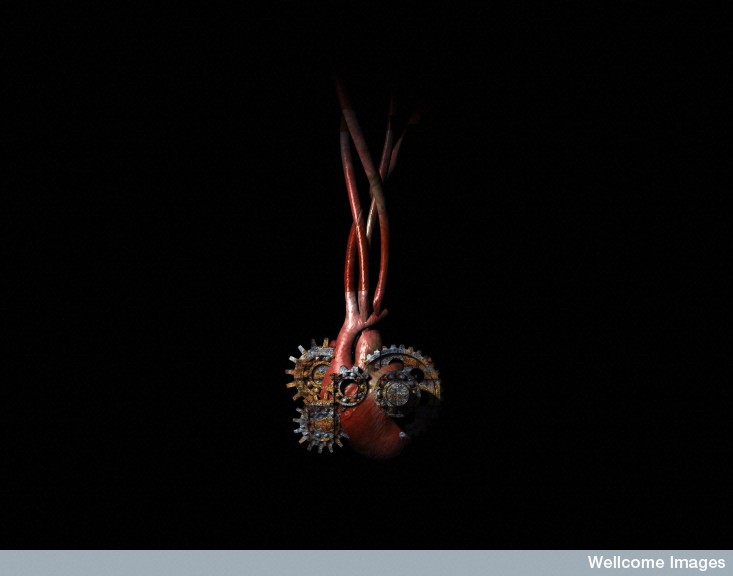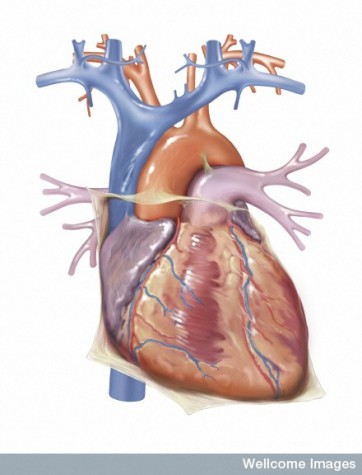This is the second post in Affair of the Heart, a series that takes place at the intersection of a highly-experienced science writer and the medical system.
 A few months after my brother almost died from an aortic dissection, when his aorta began to break down right where it emerges from the heart, I was in the office of a respected Washington cardiologist to get myself checked out.
A few months after my brother almost died from an aortic dissection, when his aorta began to break down right where it emerges from the heart, I was in the office of a respected Washington cardiologist to get myself checked out.
He ordered a stress test, which I completed with no sign of any problems—I was a dedicated runner, after all. But when I asked him whether a stress test would indicate precursors to aortic dissection, he agreed it probably wouldn’t. That would require an echocardiogram—ultrasound imaging that shows the structure of the heart and aorta and, thanks to the Doppler effect, displays the flow of blood through the heart chambers and major blood vessels in hues of red and blue. It so happened that an echo machine was available in his office at that moment, so I had the procedure there and then. The cardiologist left to see another patient, saying he would be very surprised if the echocardiogram showed any abnormalities.
The next morning, however, he called to say the imaging had turned up something: a mild dilation of the aortic root. He prescribed a beta blocker, a drug that lowers blood pressure, slows the heart rate, and reduces the strength of the heart’s contraction, relieving some of the stress on the aortic root. And he recommended a follow-up echocardiogram in 6 months.
The follow-up echo apparently showed little or no change, and another one a year later also showed no further dilation. So I became complacent. I let the time between supposedly annual imaging stretch out a couple of years–or more.
 And my attitude didn’t change when, in 2008, my brother discovered that my paternal grandmother’s death certificate listed “ruptured aorta” as the cause of death. That set my brother and me wondering about my father’s death in 1981, at the age of 67. He suffered what was diagnosed as a heart attack, but no autopsy was performed. My mother’s description of his demise soon after it occurred, we now realized, had some of the hallmarks of an aortic dissection. It was beginning to sound like a family affliction.
And my attitude didn’t change when, in 2008, my brother discovered that my paternal grandmother’s death certificate listed “ruptured aorta” as the cause of death. That set my brother and me wondering about my father’s death in 1981, at the age of 67. He suffered what was diagnosed as a heart attack, but no autopsy was performed. My mother’s description of his demise soon after it occurred, we now realized, had some of the hallmarks of an aortic dissection. It was beginning to sound like a family affliction.
Even then, I remained complacent. Surprisingly, I didn’t go into my usual reporter mode. Why not? Denial? Hubris? Negligence? Probably all of the above. But there was another factor: I had little rapport with the cardiologist I was seeing. He would breeze in and out of office visits, sometimes with a student in tow, and rarely spent more than a few minutes talking to me. Aside from the day after my first visit, when he told me I had a mildly dilated aortic root, he didn’t discuss test results with me; his office simply notified my primary care physician. There seemed to be no urgency, so I let the time between appointments lapse even further. Yet I will never understand why I didn’t once revert to type, call up Google, and start asking questions.
Last year, when I retired and moved from Washington, DC, to Lewes, Delaware, my primary care physician urged me to sign up with a cardiologist in the Lewes area. Fortunately, I followed his advice. I made an appointment with Rob Myers, a young cardiologist who was highly recommended by a friend, a retired cardiologist himself.
I explained my family history of aortic catastrophes and told Dr. Myers I had been diagnosed more than a decade ago with a mildly dilated aortic root. He thought it was time for another echocardiogram, and he kindly refrained from pointing out that several years had elapsed since my last supposedly annual checkup. The echo results jolted me out of my complacency.
The aortic root enlargement was now moderate. It had grown to a diameter of 4.5 centimeters. Normal for a man my size would be around 3 to 3.5 centimeters. How fast it had expanded wasn’t known because my previous cardiologist’s office hadn’t sent any records. At that point, Dr. Myers recommended an MRI, which provides a higher resolution view of the heart and aorta, and I finally went into science reporter mode.
The MRI provided no reassurance. The enlargement was 4.9 centimeters at the aortic root, tapering to 4.1 centimeters midway between the heart and the aortic arch, the region where the carotid arteries branch off to the brain and the aorta does a U-turn to transport blood to the rest of the body.
The rule of thumb among aortic disease specialists, enshrined in international guidelines published in 2010, is that surgery should be considered when the diameter of an aortic aneurysm reaches 5.0 to 5.5 centimeters. At that point, the risks of aortic dissection or rupture begin to outweigh the risks associated with the surgery to replace the damaged aorta.
It was time, Dr. Myers said, to see a specialist, someone who has dealt with many aortic aneurysms.
§
This is the second in a series. The next one comes in a week, next Monday, 10/20: Facing Reality, Finally
________
Colin Norman has been a science journalist for more than 40 years. He is the former news editor for Science magazine and currently lives in Lewes, Delaware.
________
Photos: anatomy of the heart, anterior aspect, with blood vessels -s Medical Art Service, Munich; computer artwork showing the heart with embedded rusting cogs — Spooky Pooka; both photos via the amazing collection at Wellcome Images
2 thoughts on “Guest Post: Affair of the Heart: II. Neglect Not So Benign”
Comments are closed.